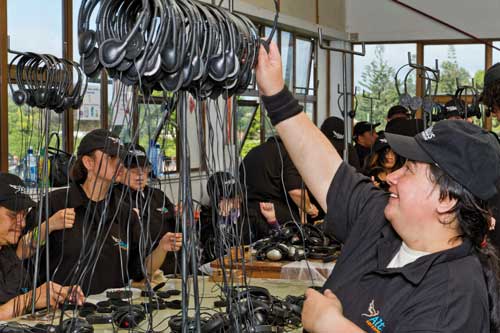Damage-free redundancies
Craig Mundy-Smith looks at what can be done to minimise the ‘collateral damage’ when making staff redundant.
Craig Mundy-Smith looks at what can be done to minimise the ‘collateral damage’ when making staff redundant.
If the prospect of making staff redundant makes you sweat, you should know that the process doesn’t have to end in damaged relationships, demoralised workers and bitterness.
So what can be done to reduce the ‘collateral damage’ of redundancy? The answer lies in considering what factors make the process so hard on the people involved.
Employers tend to focus their energies on ensuring the business case for the restructure is robust and the procedures followed are technically correct. Far less attention is given to the feelings of the people involved. As a result, the process becomes very impersonal, sometimes appearing to be conducted by ‘hatchet men’ with clinical brutality.
Employees, who have been told (perhaps for years) that they are indispensable members of a tightly-knit team, perceive a radical change in the way they are treated. Suddenly, they are mere cogs in a machine, surplus to their employer’s requirements. No wonder they feel betrayed!
But it doesn’t need to be this way. There’s no denying that redundancy is an unpleasant process for all concerned. By remaining clinical and detached, you are making things harder for the employee. Employees want to be treated as respected and valued participants in restructuring decisions. It is their future that is at stake.
For many employees, anger at being treated with disrespect is their primary reason for pursuing a personal grievance. What they often want, but seldom receive from employers is a personal apology. Disregarding your employee’s feelings can be expensive!
Act in good faith
The law is very clear about the need for attention to feelings in the process. The Employment Relations Act 2000 and the case law interpreting and applying the Act focus very much on the mutual respect between employer and employee. If you truly value your employee as a person, you will act in good faith and be open and communicative. You will provide them with all the information they need, listen carefully to what they have to say, be open to new ideas, and give them the time and resources they need to respond to you.
That’s what a reasonable employer would do, and what all employers ought to do.
Once you understand the philosophy behind the law, it makes compliance with your obligations easier. The procedures you follow are not a mere checklist; they are part and parcel of treating your employee with integrity and dignity.
There are other advantages to the “kinder, gentler” approach. The primary legal remedy granted to employees where there have been defects in the redundancy procedure is compensation under section 123(1)(c)(i) of the Act for “humiliation, loss of dignity and injury to feelings”. Larger awards of compensation will be granted for botched redundancy procedures where the split was acrimonious, hostile and hurtful, with lesser sums being awarded where the parties remain on relatively good terms.
Being polite and tactful really can pay dividends!
Tips for minimising collateral damage:
• Always obtain professional advice when restructuring your business. There are many pitfalls for the unwary.
• Show a little empathy. Your employee will be scared, confused and angry. That’s normal.
• Acknowledge your employee’s contributions to the business. Emphasise that they have a lot to be proud of.
• Separate the people from the problem – the redundancy is not a reflection of the employee’s personal qualities or performance.
• Don’t ‘sugar-coat’ your message, as this can be misleading.
• Don’t talk down to your employees. They are mature enough to hear the hard truths.
• Allow employees to say their goodbyes to their co-workers in their own way, and let them know they will be missed.





